What is the difference between the wet planing method and the conventional method of coffee treatment in Indonesia?
Professional coffee knowledge exchange more coffee bean information please follow the coffee workshop (Wechat official account cafe_style)
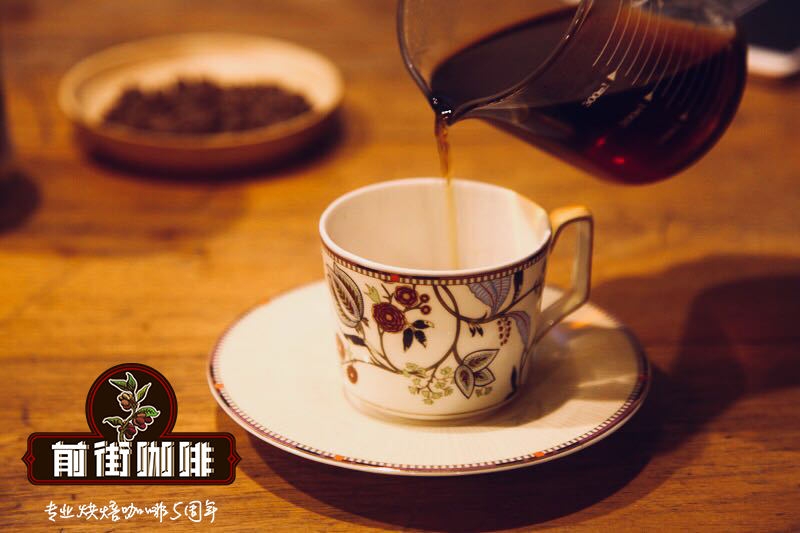
Unlike other treatments, the wet planing method was founded in Indonesia, and Indonesia is the only coffee producer that mainly uses the wet planing method, which can be said to be a tailor-made coffee treatment for Indonesia.
But how did this magical treatment come into being? What is the difference between its existence and the conventional treatment? Next, the editor will have a good chat with you.
I. the reason for the invention of the wet planing method
Generally speaking, coffee-producing countries have a distinct dry season and rainy season. For coffee, which depends on heaven for food, rainy days determine the time when coffee blossoms and bears fruit. However, if, like Indonesia, there is a rainy season all the year round and blossoms and bears fruit all the year round, then not only the coffee trees are helpless, but the farmers are also ignorant.
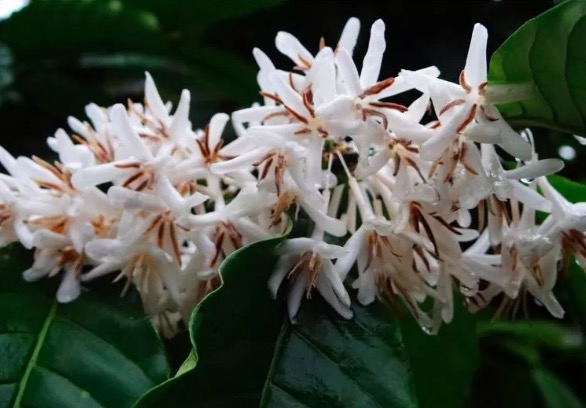
The flowers of coffee are white.
What does that mean? First of all, Ka Nong harvests coffee all year round, and secondly, due to lack of light, it takes at least 15 days to dry coffee beans in humid Indonesia, even if the coffee is fermented by washing and exposed to the sun in the morning. when it rains heavily in the afternoon, the farmers will move the coffee indoors again.
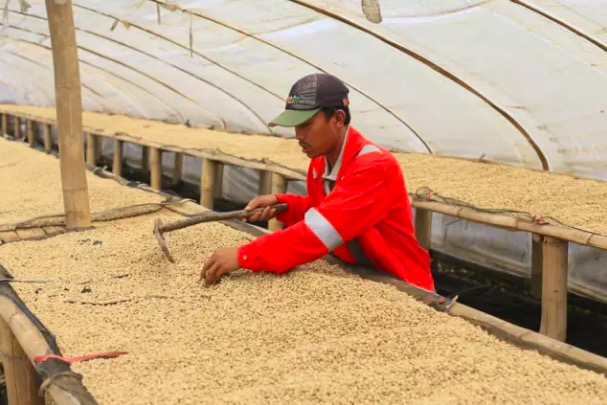
Conditional coffee processing plants will build greenhouses for dried coffee beans.
It is estimated that sun-tanned coffee will be difficult to recover in the lifetime in the climate of Indonesia. Therefore, it is particularly important to invent a method of coffee treatment according to local conditions.
Second, what is the difference between wet planing and conventional treatment?
The biggest difference between the wet planing method and the ordinary treatment method is that the wet planing method is to remove the shell of the raw coffee bean and then dry it, while the common treatment method is to dry the coffee bean and then remove the shell. Because most of the coffee in Indonesia is grown by small farmers, Indonesian farmers use their own small peeling machine to remove the peel of coffee cherries directly after picking the coffee.
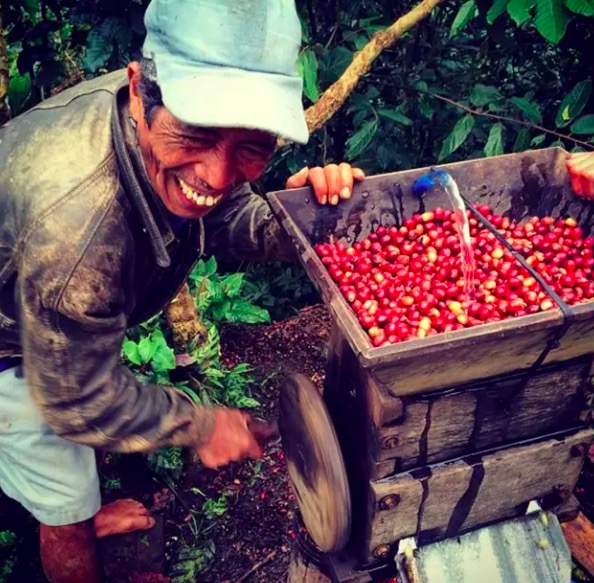
The happy coffee farmer uncle is peeling the coffee.
However, Indonesian coffee is not sent to the processing plant for unified treatment. Instead, farmers ferment it in their own iron cans overnight or for a few days and sell it to the local recycling bin that buys raw beans with wet sheepskin shells. At this time, the moisture inside the beans is 35 to 40 percent. The coffee factory insolates the parchment raw beans for two or three days, and when the water content reaches 20-24%, the shell is removed by a specially made rubber core version to grind off the outside bean shell.
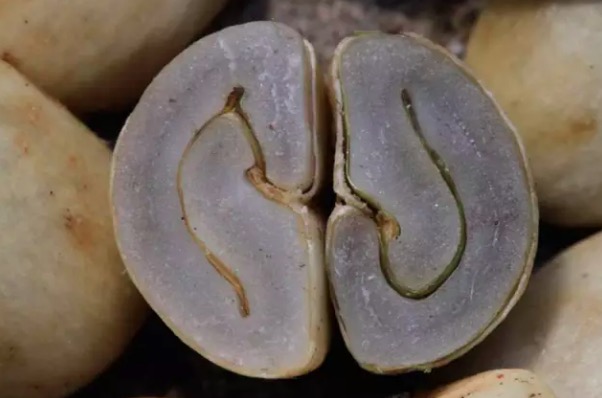
The internal cross section of wet planing coffee beans is still between 35% and 45%.
The peeled coffee beans are finally dried to about 12% of the coffee, which can be packaged and exported. The most important feature of Mantenin after wet planing is that the color of raw coffee beans is dark green and dark green. At the same time, the proportion of broken beans is higher than that of other treatments, and there are more defective beans that people can't look directly at. But for many coffee gluttons, Manning's unique taste is always inseparable from the contribution of wet planing.
Third, the unique taste of wet planing.
The most important feature of wet-planed Mantenin coffee is that the taste is invasive. For many of Mantenin's loyal fans, the taste of Mantenin is the taste of coffee, the strong bitterness, the smell of spices and herbs, and the thick and complex thickness. But other coffee with sour taste and even obvious flavor is another kind.
So why does Manning's coffee taste so special?
Manning's appearance is also very recognizable.
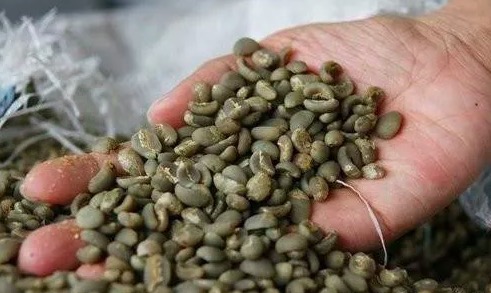
The reason is that during the long-term fermentation of Mantenin coffee beans, it is affected by a variety of external microorganisms and enzymes, resulting in the smell of soil, the aroma of grass, and the charming taste of herbs. But for many people who don't like Manning, the smell is bad news.
Summary of wet planing method
Due to the unique growth environment of Indonesia, the wet planing method came into being. This method also creates the unique flavor of Mantening coffee. It can be concluded that low acid and strong strength is the most obvious feature of wet planing method. But Indonesia has not only a kind of wet planing coffee, but also a lot of distinctive boutique coffee.
Important Notice :
前街咖啡 FrontStreet Coffee has moved to new addredd:
FrontStreet Coffee Address: 315,Donghua East Road,GuangZhou
Tel:020 38364473
- Prev
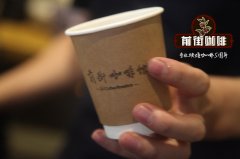
Italian coffee machine commercial brand recommendation_three top commercial coffee machine brand introduction
Professional coffee knowledge exchange More coffee bean information Please pay attention to coffee workshop (Weixin Official Accounts cafe_style) Since Starbucks, coffee is more and more important to our life. Whether I read books and study in my spare time or chat with friends, a cup of good coffee will bring us a good mood. If you want to do well, you must sharpen your tools first. A good coffee
- Next

How to sip coffee cup correctly? does it take practice to test coffee cup sipping?
Professional coffee knowledge exchange more coffee bean information please follow the coffee workshop (Wechat official account cafe_style) a cup of coffee is good or bad, the most direct way of expression is to make a cup test judgment. In the coffee cup test, it is recommended to use the method of sipping. Sipping coffee with exaggeration, making a lot of noise, what on earth is the purpose of sipping? Cup test sipping in coffee tasting
Related
- Beginners will see the "Coffee pull flower" guide!
- What is the difference between ice blog purified milk and ordinary milk coffee?
- Why is the Philippines the largest producer of crops in Liberia?
- For coffee extraction, should the fine powder be retained?
- How does extracted espresso fill pressed powder? How much strength does it take to press the powder?
- How to make jasmine cold extract coffee? Is the jasmine + latte good?
- Will this little toy really make the coffee taste better? How does Lily Drip affect coffee extraction?
- Will the action of slapping the filter cup also affect coffee extraction?
- What's the difference between powder-to-water ratio and powder-to-liquid ratio?
- What is the Ethiopian local species? What does it have to do with Heirloom native species?

